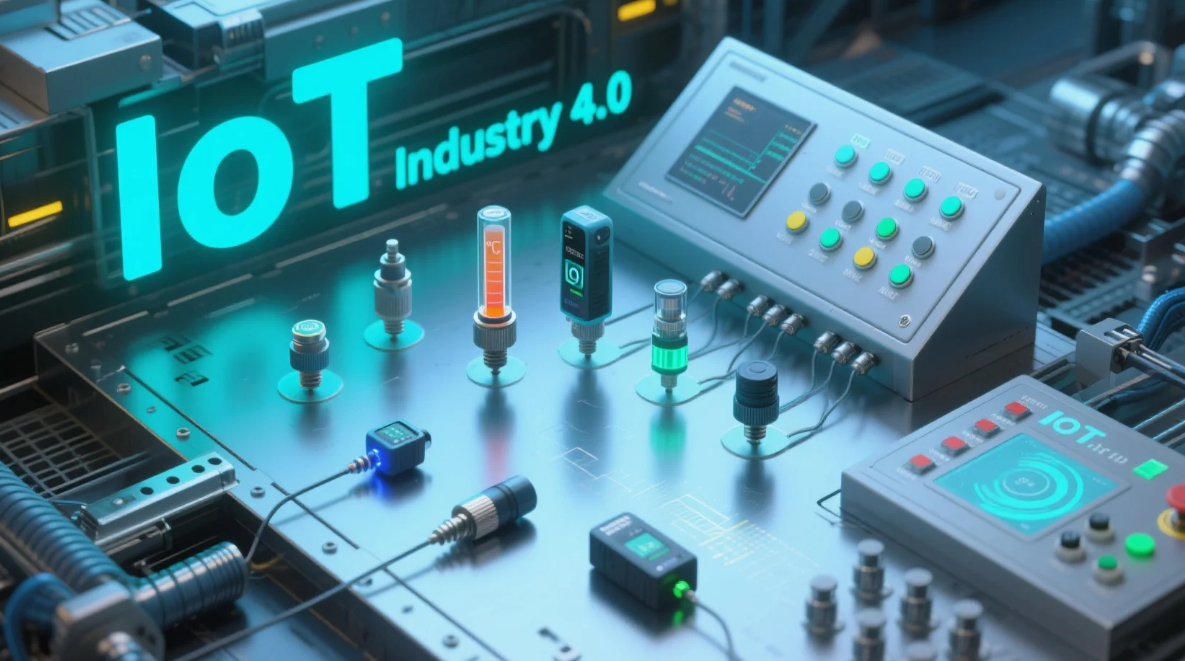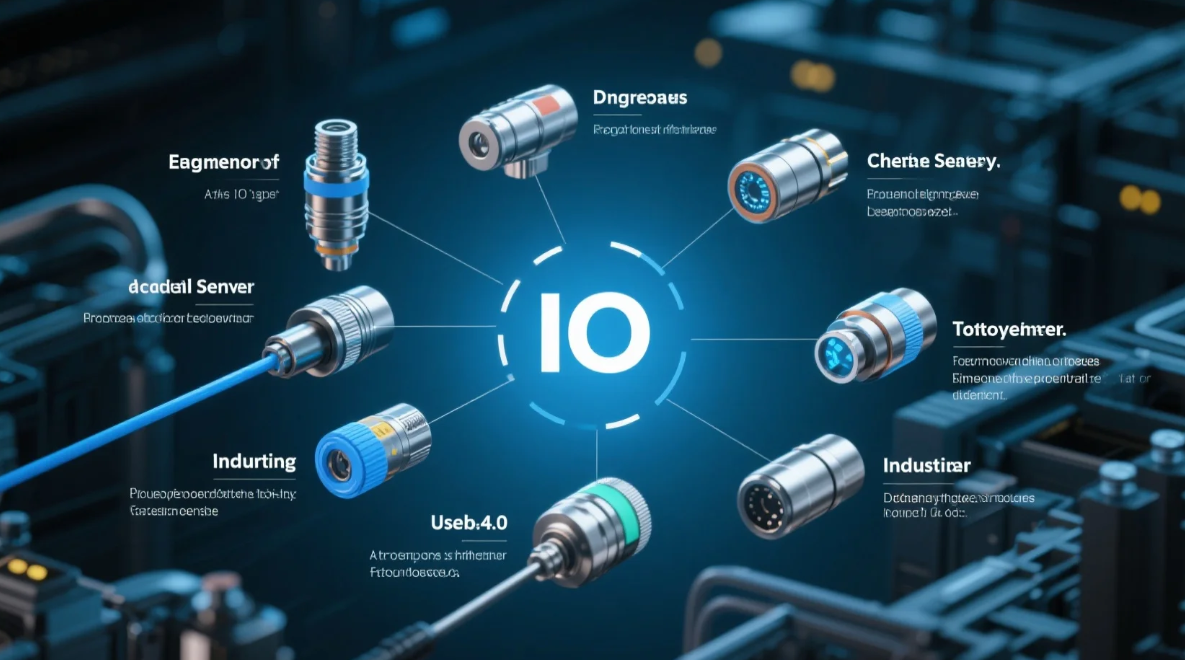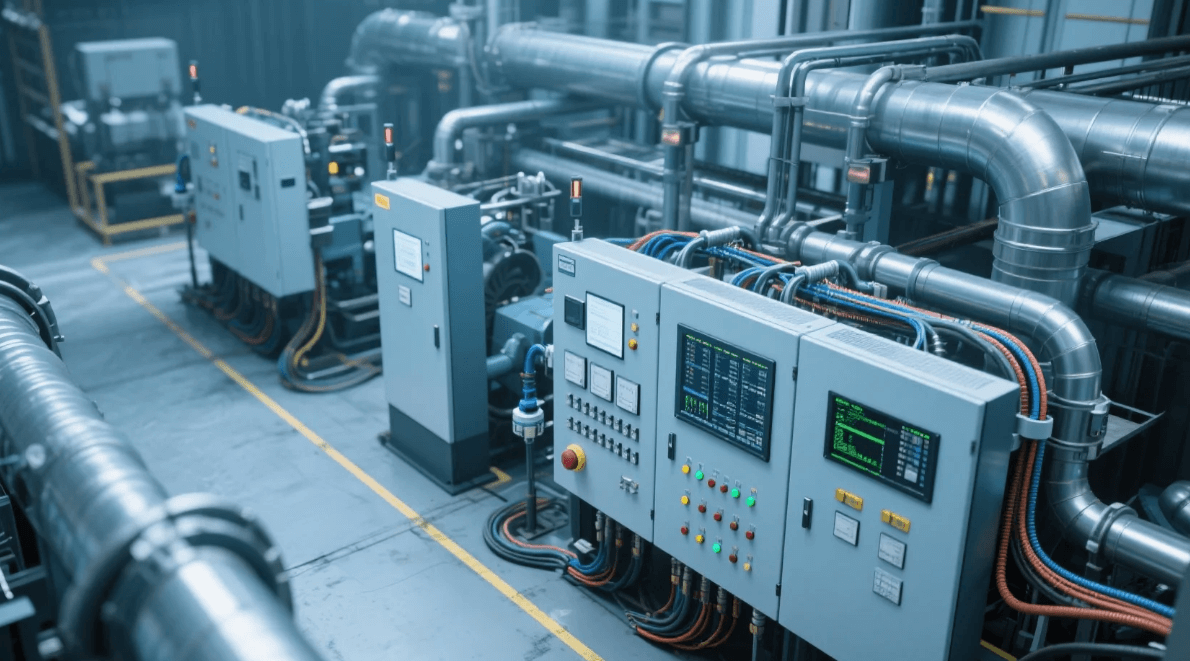Soorten industriële sensoren voor automatisering

In the era of smart industry, data is everything — and sensors are its nerve endings. They collect essential data that supports intelligent industrial processes. As technologies like the Internet of Things (IoT), Industry 4.0, and intelligent manufacturing evolve rapidly, the demand for smarter, more efficient sensors is also rising. These advanced “Industrial Sensor 4.0” solutions are driving the digital transformation of factories, from data collection on the ground to cloud-based analysis.
Why Sensors Matter in Industrial Automation

Sensors are critical in industrial automation. They help monitor, analyze, and respond to various environmental and operational changes — such as temperature, pressure, motion, and humidity — enabling smarter, more efficient decision-making.
Modern smart sensors combine MEMS technology, firmware, and signal processing, making them easy to integrate and cost-effective for industrial design. Let’s look at the major types of industrial sensors and their applications.
1. Temperatuursensoren
Temperature is one of the most commonly measured parameters in industrial settings.
● Digital Temperature Sensors
These sensors use A/D converters and communication interfaces like RS-232 or RS-485. Advanced filtering technology ensures accurate, stable, and fast measurements with minimal interference.
● Temperature & Humidity Sensors
These sensors combine both temperature and humidity probes. They output linear current or voltage signals and can communicate via standard industrial interfaces.
Toepassingen: Used widely in medical, manufacturing, energy, food processing, petrochemical, metallurgy, printing, and pharmaceutical industries.
2. Druksensoren
Pressure sensors detect physical pressure and convert it into electrical signals for monitoring.
Kenmerken:
- Consist of a sensing element and signal processor
- Can detect pipeline pressure and alert systems for leaks or abnormalities
Toepassingen: Extensively used in water treatment, transportation, building automation, aerospace, military, petrochemicals, oil wells, power generation, and more.
3. Level Sensors
These sensors measure the level of liquids (and sometimes solids) in tanks or containers.
● Types:
- Continuous Level Sensors: Provide real-time level measurement
- Point Level Sensors: Detect high/low levels at specific points
Toepassingen: Found in industries like manufacturing and automotive, as well as in household appliances such as refrigerators, washing machines, water heaters, and toilets.
4. Infrared Sensors

Infrared sensors detect heat radiation from objects without physical contact.
Advantages:
- High sensitivity and fast response
- No wear and tear due to non-contact operation
- Suitable for measuring temperature, gas analysis, and non-destructive testing
Toepassingen: Used in medicine, defense, space tech, environmental monitoring, and increasingly in industrial IoT solutions.
5. Proximity Sensors
These sensors detect nearby objects without physical contact.
Kenmerken:
- Non-contact, no spark/noise, long lifespan
- Suitable for use in oily or wet environments
- Can detect metal objects or use spring-loaded probes for positioning
Toepassingen: Common in automation, aerospace, robotics, and security systems (e.g., anti-theft devices in museums, data centers). Also used in elevators, garages, and smart doors.
6. Smoke Sensors
Smoke sensors detect smoke from fire hazards and issue early alarms.
Kenmerken:
- MCU-controlled for intelligent smoke detection
- Essential in flammable or explosive environments
- Can be integrated with IoT systems for real-time alerts
Toepassingen: Used in HVAC, construction site monitoring, and any industry prone to fire risks or gas leaks.
7. Optical Sensors
Optical sensors measure physical properties using light.
Advantages:
- Non-contact and non-destructive
- Fast and accurate
- Ideal for high-speed or remote sensing
Toepassingen: Used in telecom, building automation, healthcare, and industrial motion detection systems.
8. MEMS Sensors
MEMS (Micro-Electro-Mechanical Systems) sensors are compact, energy-efficient, and highly reliable.
Kenmerken:
- Manufactured using micromachining technology
- Support mass production
- Often combined with wireless technologies like ZigBee for machine-human interaction
Toepassingen: Found in aerospace, automotive, medical devices, and consumer electronics. Crucial for devices that require miniaturization.
Conclusie
Sensors are the foundation of the smart industry. They serve as the front-line tools for collecting real-time data, enabling automation, improving safety, and driving operational efficiency. As industrial IoT and automation technologies continue to grow, so does the demand for high-performance, smart sensors. Together, sensors and industrial automation form a mutually reinforcing cycle — each pushing the other forward in the era of Industry 4.0.


